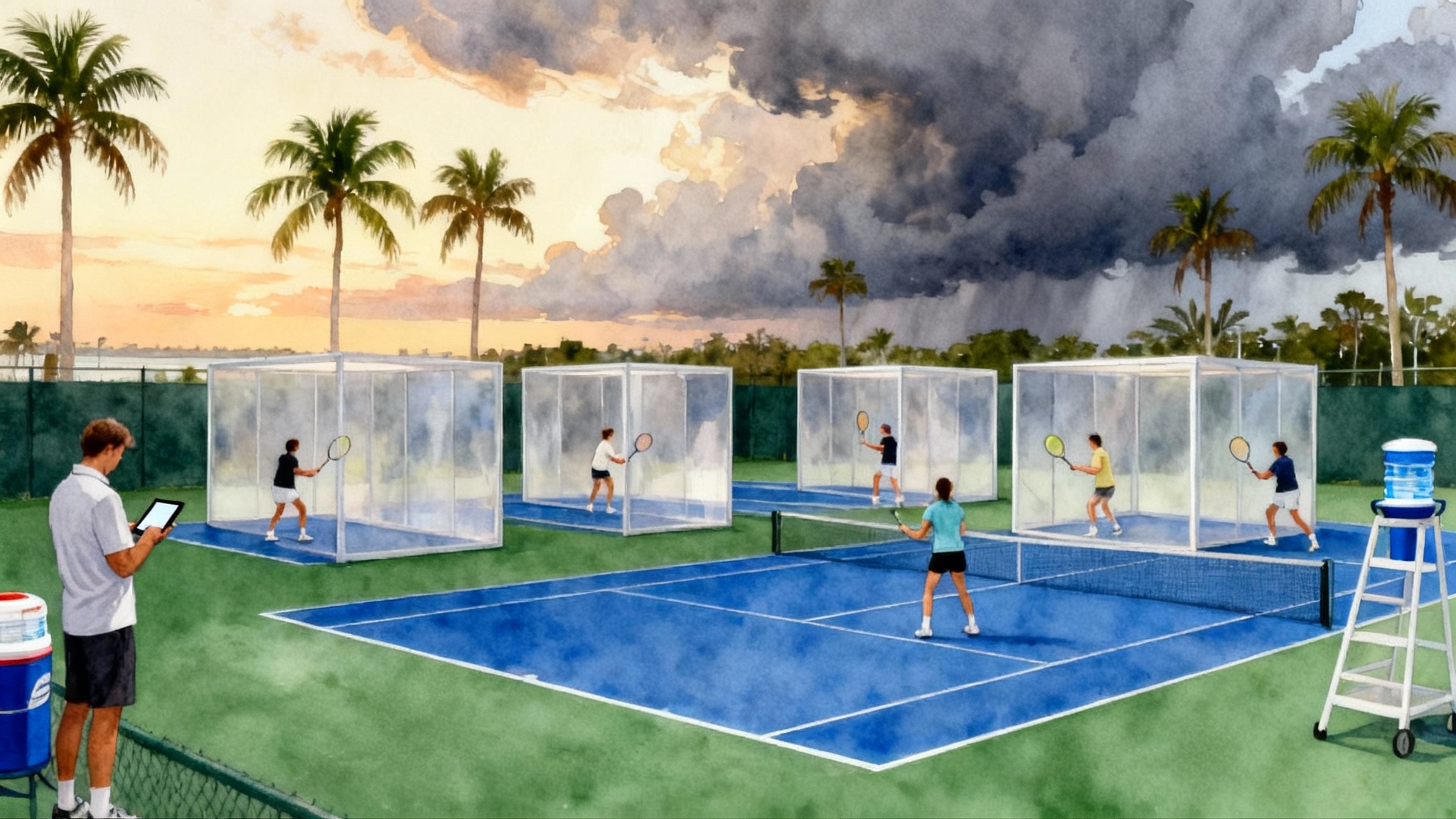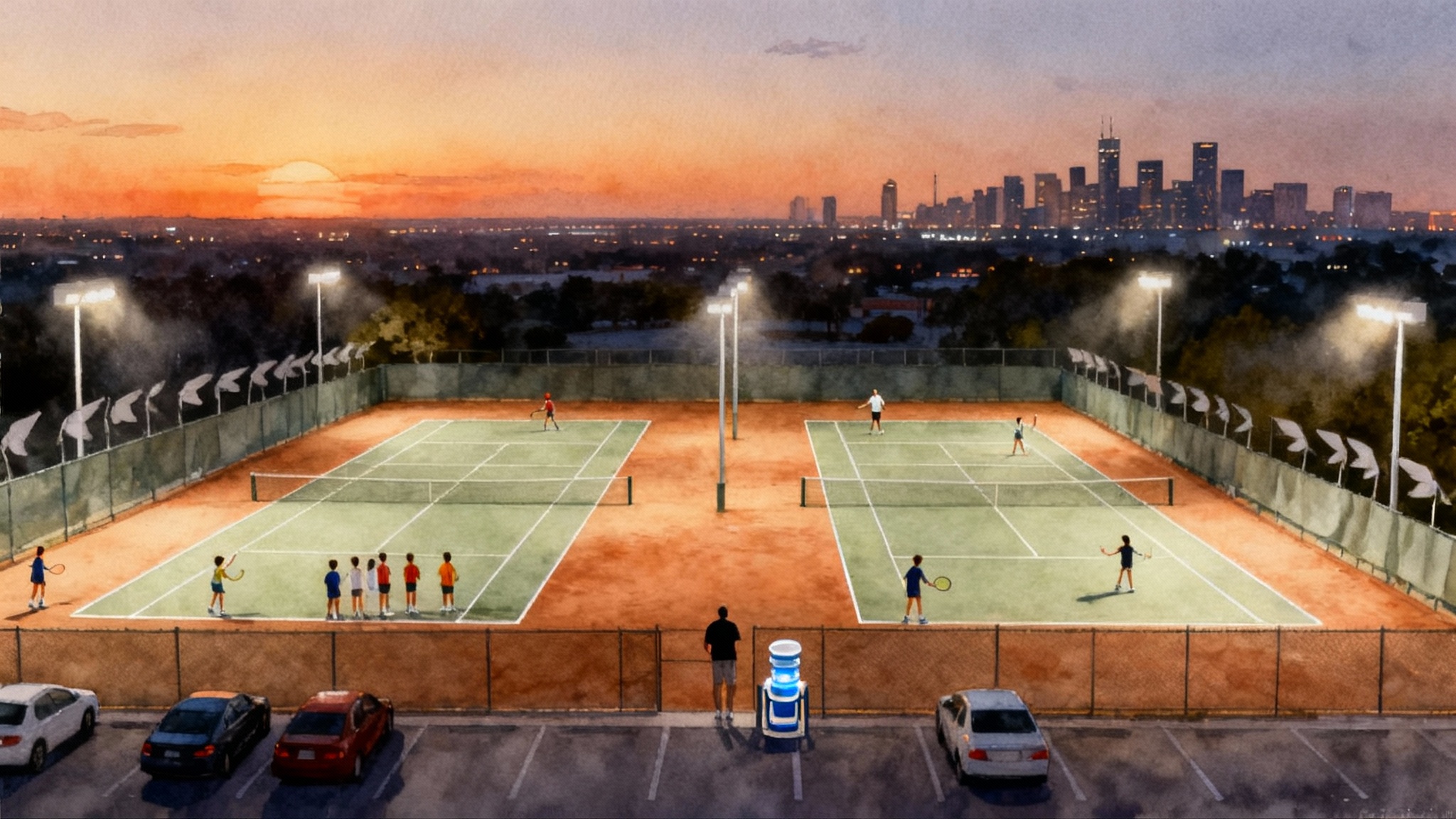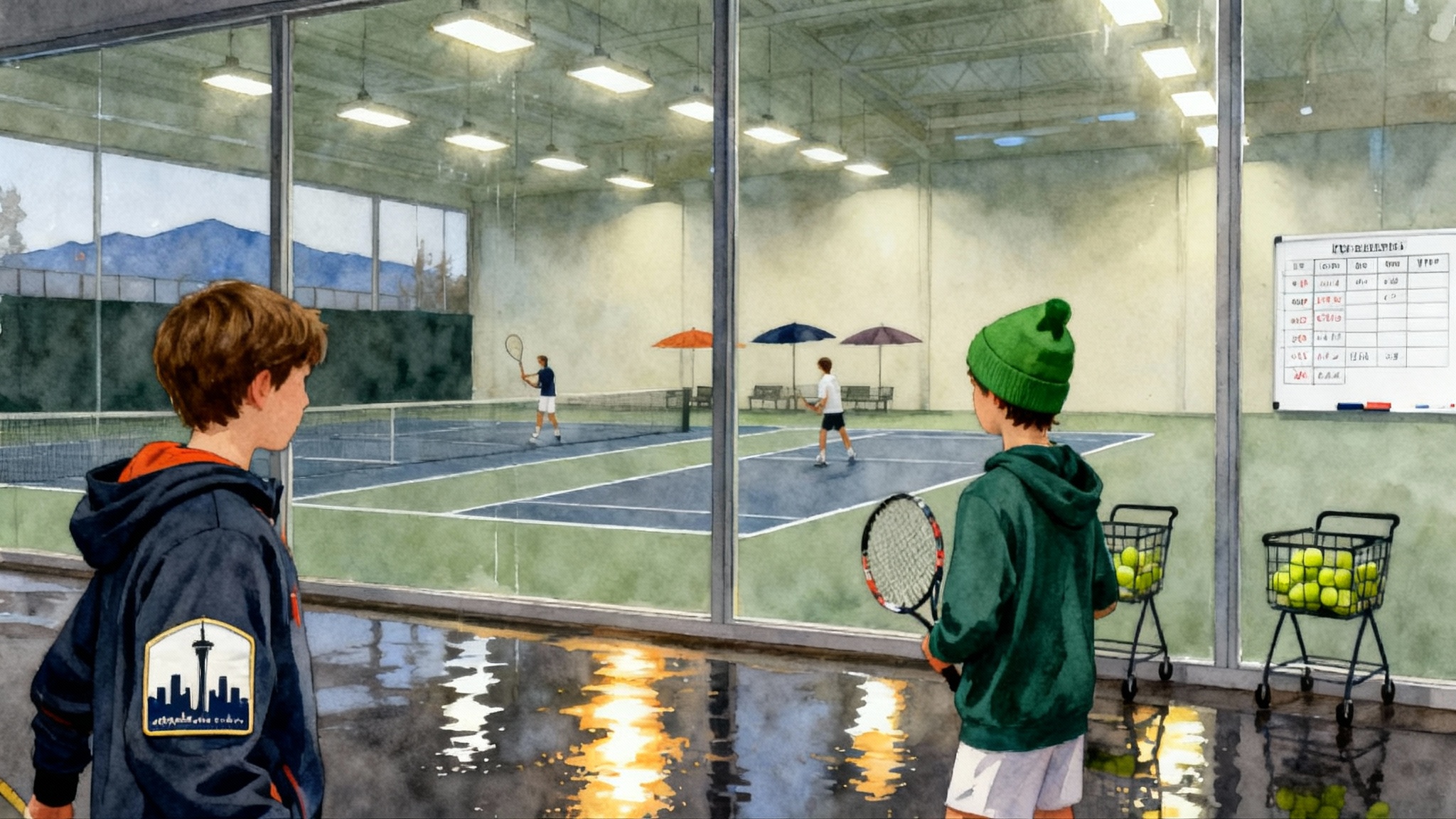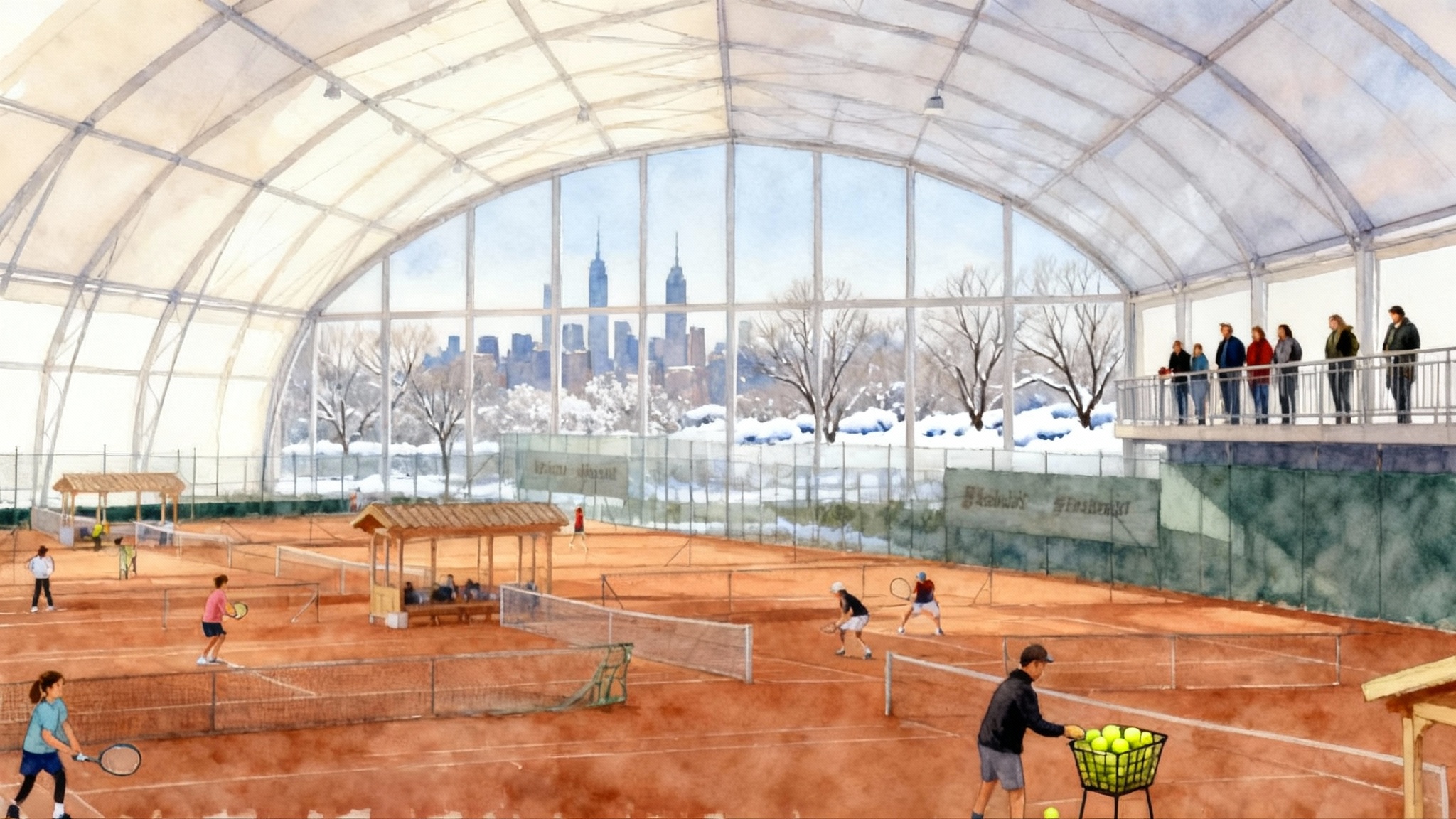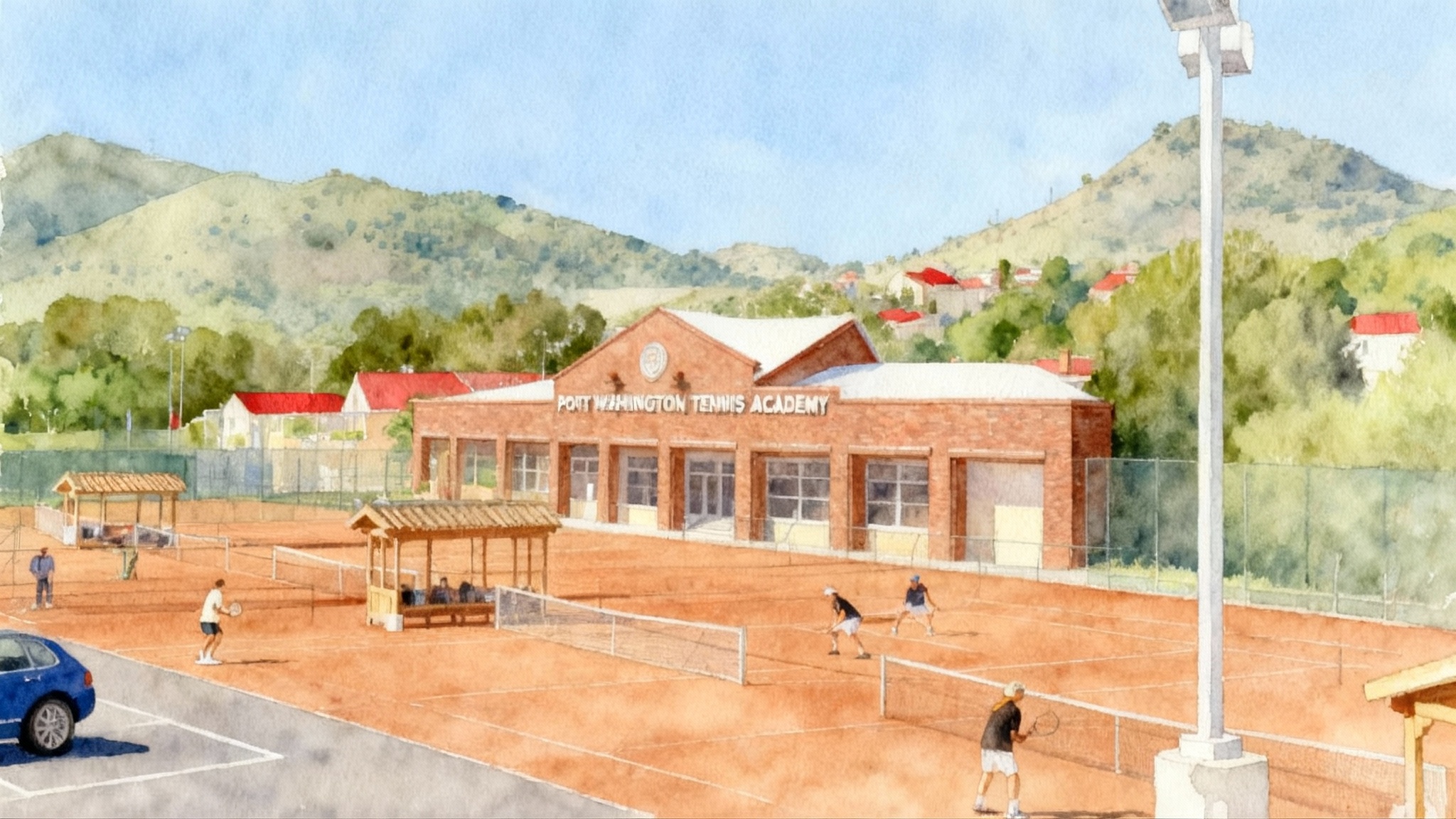Delhi vs Bengaluru: Neelachal or Rohan Bopanna for 2025–2026
A practical parent guide comparing Neelachal Tennis Academy in New Delhi with Rohan Bopanna Tennis Academy in Bengaluru. Training model, surfaces, climate, tournament access, academics, budgets, and checklists for ages 10–18.
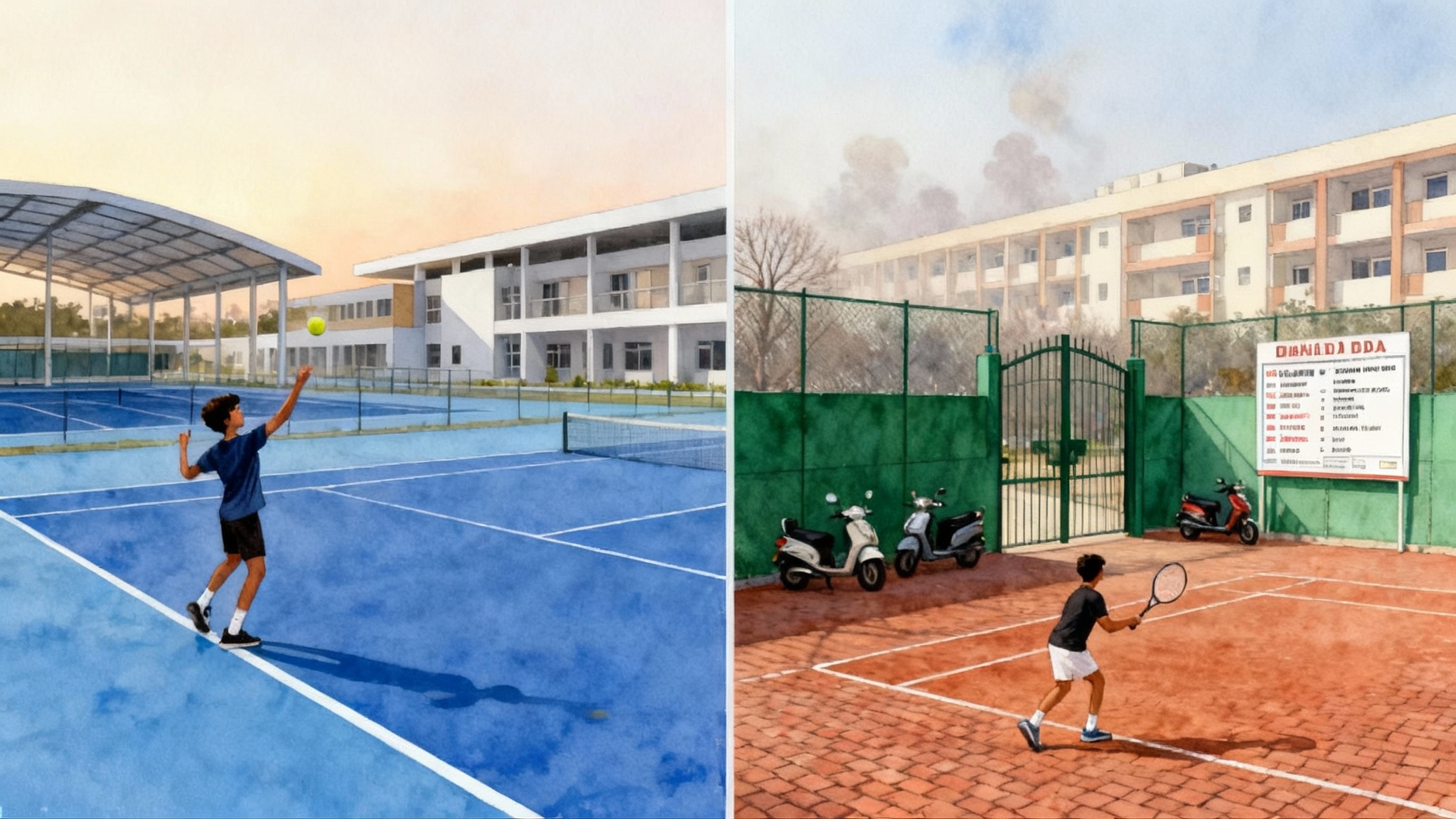
How to use this guide
You asked for a head to head comparison of two well known options in India: Neelachal Tennis Academy in New Delhi and the Rohan Bopanna Tennis Academy in Bengaluru. This guide keeps the detail parents need and cuts the noise. For each academy we cover training model, coaching structure and weekly workload, surface mix and climate, AITA and ITF access, academics integration, college recruiting support, and realistic costs and housing. We end with age specific checklists and scouting notes for international families. For deeper background on each program, see our internal write ups: the Rohan Bopanna Tennis Academy profile and the Neelachal Tennis Academy profile.
If you like comparison pieces, our Spain matchup offers a useful template for decision making in another market: the Emilio Sanchez vs Ciudad guide.
Academy profiles in brief
Rohan Bopanna Tennis Academy, Bengaluru
- Home base: Padukone Dravid Centre for Sports Excellence, Yelahanka, a full service multi sport campus with on site residences, sports science support, and covered courts. RBTA explicitly offers residential and day programs at this site, which matters if you seek a contained environment where training, recovery, meals, and sleep are all within a short walk. For current offerings, see the academy page at RBTA at Padukone Dravid Centre.
- Training model: clear pathways from 10 and under to high performance. The protected campus and covered courts reduce weather downtime and make double session weeks more predictable.
- Surfaces: international size hard courts plus covered courts for all weather training. Hard court bias suits players who target ITF Juniors and U.S. college recruiting, where hard is the dominant surface.
- Climate: Bengaluru is temperate most of the year, with a long monsoon season that brings rain but cooler air. Covered courts soften the rain risk, and sessions can shift to fitness or indoor court time.
- Tournament access: frequent AITA and ITF junior events in the city and nearby Mysuru. The KSLTA stadium in central Bengaluru routinely hosts junior ITF weeks and pro events, which keeps travel time down for ranking blocks.
- Academics integration: multiple pathways. Families who want school on campus often look at Bengaluru models where the school day and tennis sit next door. RBTA has partnered with integrated schooling options in the city over time; confirm the current partner name, schedule, and curriculum when you inquire.
Who thrives here: boarding suited athletes ages 13 to 18 who want a professional style schedule and parents who value sports science and a one campus life.
Neelachal Tennis Academy, New Delhi
- Footprint: a coaching network founded in 2004 by coach Dilip Mohanty, with long running centers at Delhi Development Authority sports complexes and select schools in the National Capital Region. For site and staff context, review the Neelachal Tennis Academy overview.
- Training model: primarily day programs that scale from beginner to high performance. The structure works well for families who want school first, tennis after school, and tournaments on weekends.
- Surfaces: at its DDA hubs, athletes typically see a useful mix of synthetic hard and clay. For example, Paschim Vihar offers both synthetic and clay courts, and Rohini offers synthetic and clay as well. This variety builds adaptability for India’s mixed surface calendar.
- Climate: Delhi has real seasons. Peak summer heat in May and June pushes sessions to early morning and evening. December and January bring cold snaps and smog days. The payoff is long dry stretches that allow heavy ball striking blocks on clay and hard.
- Tournament access: dense AITA calendar across the National Capital Region. Weeklong events rotate through Siri Fort, RK Khanna Tennis Stadium, Noida, Gurugram, and the DDA network. Many draws are reachable by car, which reduces hotel nights.
- Academics integration: Neelachal’s presence on school campuses, such as long standing programs at Bal Bharati Public School Pitampura and Gateway International School Sonipat, eases after school training. You will still be managing school transport and homework around evening sessions.
Who thrives here: committed day scholars ages 10 to 16 building a base, and 16 to 18 year olds who prefer to stack school credentials in Delhi while chasing AITA points.
Training model and weekly workload
-
RBTA, boarding option: expect a double session template five days a week, plus a lighter sixth day. A typical week for a 15 to 17 year old high performance player:
- Monday to Friday morning: 90 minutes technical and patterns, 45 minutes strength and mobility
- Midday: video review or school block if you are in an integrated program
- Afternoon: 120 minutes match play and situational sets, 30 minutes recovery
- Saturday: tournament play or team match day, light lift and mobility
- Sunday: off or travel
The covered courts and on site gym make this template realistic year round, with fewer cancellations.
-
Neelachal, day model: expect six day weeks with a concentrated 2.5 to 3.5 hour after school block for high performance, and optional morning hits during exam free periods. A typical week for a 13 to 16 year old:
- Monday to Friday late afternoon: 30 minutes dynamic warmup and movement, 100 minutes drilling and live ball, 20 minutes serve targets, 20 minutes conditioning
- Saturday: match ladder and points day, 2 to 3 hours
- Sunday: tournament travel or rest
Morning add ons are feasible in cooler months; in peak summer, early starts and late evenings are the norm.
Mechanism to note: boarding models create more total hours and better control of recovery. Day models reward families who can be consistent with transport, nutrition, and sleep at home.
Coaching structure and feedback loops
-
RBTA: senior coaches lead technical blocks, with assistants running pods by age and level. Strength and conditioning sits in a unified plan alongside on court time. The campus adds sports science inputs like periodic assessments, physio, and the ability to do on site video breakdowns. Ask for the chain of responsibility on your child’s court, the weekly feedback format, and how match reports from AITA or ITF weeks feed back into drills.
-
Neelachal: a lead head coach rotates across DDA and school sites with site coaches owning daily plans. The upside is experience across many Delhi draws and flexible match scheduling. The parent task is to lock a single point of contact for your athlete’s plan, and to request a standing 10 minute monthly review on goals, changes, and tournament entries.
Signal to watch at both: does the academy write a six week block plan that names the themes, fitness targets, and the tournaments that will test those skills; and do you receive two or three measurable cues your athlete can recall from memory.
Surface mix and climate
- Bengaluru: hard court first, some indoor coverage, moderate temperatures with frequent showers in monsoon season. Covered courts reduce rain risk and make year round doubles patterns work.
- Delhi: mix of clay and synthetic hard at DDA hubs, long dry spells for ball striking, extreme heat in late spring, chilly mornings in winter, and occasional smog days. The variety builds coping skills. It also requires parents to plan hydration, sunscreen, and air quality workarounds.
Practical implication: a hard heavy program in Bengaluru can fast track pace of shot skills that matter for college tennis and many ITF stops. Delhi’s mix teaches height, spin, and patience on clay while keeping hard court competence for AITA and school events.
AITA and ITF tournament access
- Bengaluru: KSLTA in the city center regularly hosts ITF junior weeks and national events. You can string two to three weeks with minimal hotel moves, then add Mysuru or Hyderabad for a compact tour. This helps rankings and reduces non tennis fatigue.
- Delhi and NCR: the deepest density of AITA events in one metro. Siri Fort, RK Khanna, and DDA venues rotate 12 and under to 18 and under weeks. Many draws are a cab ride away, which keeps costs down. Plan for summer early morning reporting times and winter cold starts.
Action for parents: build calendars from the athlete backward. Choose two skill themes, then pick three or four tournaments that stress those skills, and have the coach mirror those match situations in the two weeks before each event.
Academics integration
- RBTA, integrated options: Bengaluru has purpose built models where school and tennis live on the same or adjacent campuses. That makes block scheduling possible, for example, 8 to 11 a.m. academics, 12 to 2 p.m. tennis, 4 to 6 p.m. tennis, and a supervised study hall. Confirm curriculum board, exam schedules, and transcript support, and ask how the academy handles missed classes during back to back tournament weeks.
- Neelachal, school first model: many families keep a conventional Delhi school day and rely on predictable late afternoon training. The benefit is a stable academic peer group. The tradeoff is traffic and time management. Ask about midterm flex, morning hits in winter, and an agreed plan for board exams year.
Parent script to use: “Please show me a weekly bell schedule for a player in Grade 9 and in Grade 11 during tournament weeks, including study hall, physio, and lights out.”
College recruiting support
What actually helps recruiters is verifiable match level and clean materials, not just a brand name. Evaluate on these deliverables.
- RBTA strengths: the campus infrastructure makes it easier to capture match video, to build a consistent hard court game style, and to test level against visiting players. Ask if they offer standardized Universal Tennis Rating match days, video production with score overlay, and coach written references on official letterhead.
- Neelachal strengths: deep familiarity with AITA draws in Delhi can help players stack competitive matches quickly. Ask if they run mock match days on hard and clay, maintain a results tracker, and provide guidance on arranging an ITF junior week once the athlete is ready.
Clear action: regardless of academy, aim for a clean highlight reel by age 16, two full match films against different styles, an updated results sheet with opponent rankings, and a short coach reference that names specific improvements in the last six months.
Costs and housing
Think in buckets, then request current quotes in writing.
- Coaching tuition: day programs in Delhi are typically charged monthly with level based tiers. Boarding programs in Bengaluru quote per term or per month including meals and housing. High performance will cost more than foundation groups.
- Housing and meals: RBTA’s campus base offers dorms and serviced apartments, which simplifies logistics for outstation families. In Delhi, Neelachal athletes are usually day scholars; outstation families commonly rent short term apartments near the DDA complex for tournament blocks.
- Physio, strength, and sports medicine: included as a baseline or billed per session. The question to ask is what is included weekly, and what is an add on.
- Tournament travel: entry fees, stringing, transport, hotels, and coach travel shares. Day scholars in Delhi often save here because many draws are within driving range.
Rule of thumb: build a monthly budget with four lines, tuition, room and board, travel, and incidentals, then add 15 percent for surprise weeks and strings.
Housing snapshots
- RBTA: on site residences with 8 to 18 bed dorms, study spaces, laundry, and dining halls make true boarding possible. Proximity lowers stray time between sessions and increases recovery.
- Neelachal: primarily a train where you live model. If you relocate to Delhi, choose housing within 20 to 30 minutes of the preferred DDA site, and plan a quiet study corner at home, a foam roller, and a freezer for ice.
Head to head: which context fits which athlete
- You want a single campus life with fewer moving parts, a hard court bias, and a clear boarding path: lean Bengaluru and RBTA.
- You want a school first path with lots of local tournaments and mixed surfaces without moving cities: lean Delhi and Neelachal.
- You want to test the waters for 60 to 90 days before committing: both are viable, but Bengaluru’s contained boarding makes a short term residency easier to trial.
Age based checklists
Ages 10 to 12
- Ask for a weekly plan that balances footwork, serve fundamentals, and play based learning.
- Look for multi sport warmups, ladders, medicine ball throws, and basic gym literacy rather than heavy lifting.
- Check the ball color progression and the plan to move to yellow ball by end of the phase if appropriate.
- Confirm match days and small tournaments every two to four weeks for a fun competition rhythm.
Ages 13 to 15
- Demand a written six week block with themes like first serve plus forehand, backhand height control, and second serve commitment.
- Ensure two to three aerobic and alactic power sessions weekly, supervised.
- Verify entry into the right AITA age group and rating based matches so confidence grows with level.
- Start collecting video of full service games and two complete sets for baseline recruiting materials.
Ages 16 to 18
- Lock a calendar that alternates training blocks with AITA and ITF weeks for ranking traction.
- Build college materials by age 16.5: highlight reel, full match films, results sheet, academics transcript, and coach references.
- Request nutrition and sleep targets. For boarding athletes, ask for lights out and study hall checks. For day scholars, set a non negotiable bedtime and morning routine.
- Confirm who travels with the athlete on out of town weeks and how costs are shared among players.
Scouting notes for international families
- Visas and guardianship: for minors in boarding, ask the academy for past experience guiding visa paperwork, local guardianship letters, and medical consent procedures.
- Cultural fit: Bengaluru’s campus model tends to group many outstation and international athletes in one residence, which eases transition. Delhi’s day scholar model helps immersion in local school life. Choose according to your child’s temperament.
- Air access and travel: Bengaluru’s Kempegowda International Airport is 30 to 45 minutes from the RBTA campus with traffic. Delhi’s airport is a hub with many direct flights; tournament sites in the NCR are often reachable by car.
- Health and safety: in Delhi winters, monitor air quality and plan indoor options. In Bengaluru monsoons, pack court shoes with better grip and a spare pair.
- Money logistics: set up a local bank account if the stay exceeds one school year, or use prepaid cards with controls for stringing and entries.
Sample trial plans before you commit
- Bengaluru boarding sampler, 2 weeks: arrive Thursday, fitness assessment Friday, two training blocks plus a local rating day in week one, a weekend tournament, repeat in week two. Debrief with the lead coach on day 13.
- Delhi day scholar sampler, 2 weeks: three evening sessions in week one, Saturday match ladder, Sunday club matchplay, repeat in week two with one morning hit. Debrief with the head coach and agree on a six week plan you could execute if you enroll.
What to ask on your first call
- Who will coach my child most days, what is their pathway, and how is progress measured weekly and monthly.
- How many hours on court, how many in fitness, and how much supervised recovery per week.
- Where will we live, who supervises study hours, and how do meal plans work.
- What tournaments fit the next six weeks and the next three months.
- What deliverables support recruiting by age 16 to 17: UTR match days, video, references.
Bottom line
Both setups can work. RBTA in Bengaluru is the cleaner one campus solution for families who want boarding, predictable hard court hours, and access to sports science. Neelachal in Delhi is the flexible school first solution with a deep local tournament map and a mix of clay and hard that builds a durable base. Most parents overvalue labels and undervalue fit. Your best move is to trial the environment your child will live in, confirm the weekly hours and the people who will be on court, and commit to a six week block with a calendar that trains specific skills and then tests them in matches. Choose the context that lets your athlete show up rested, coached, and ready, week after week.

